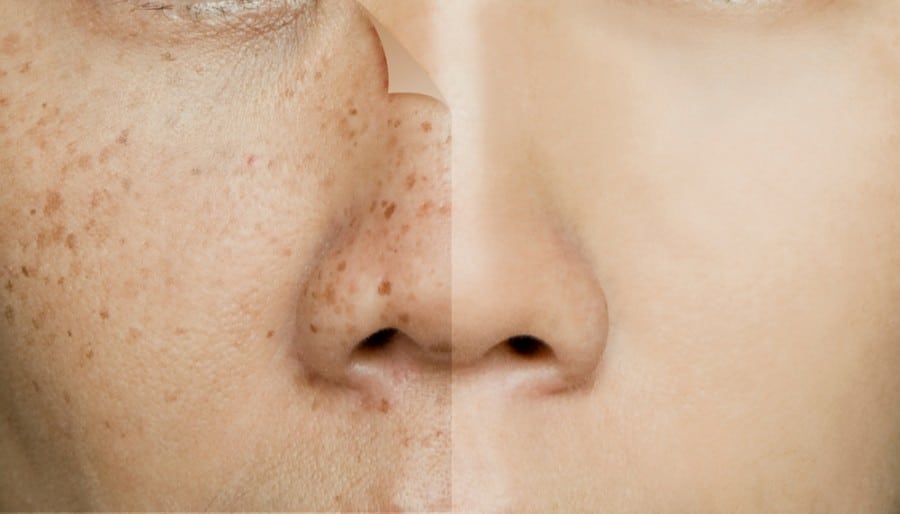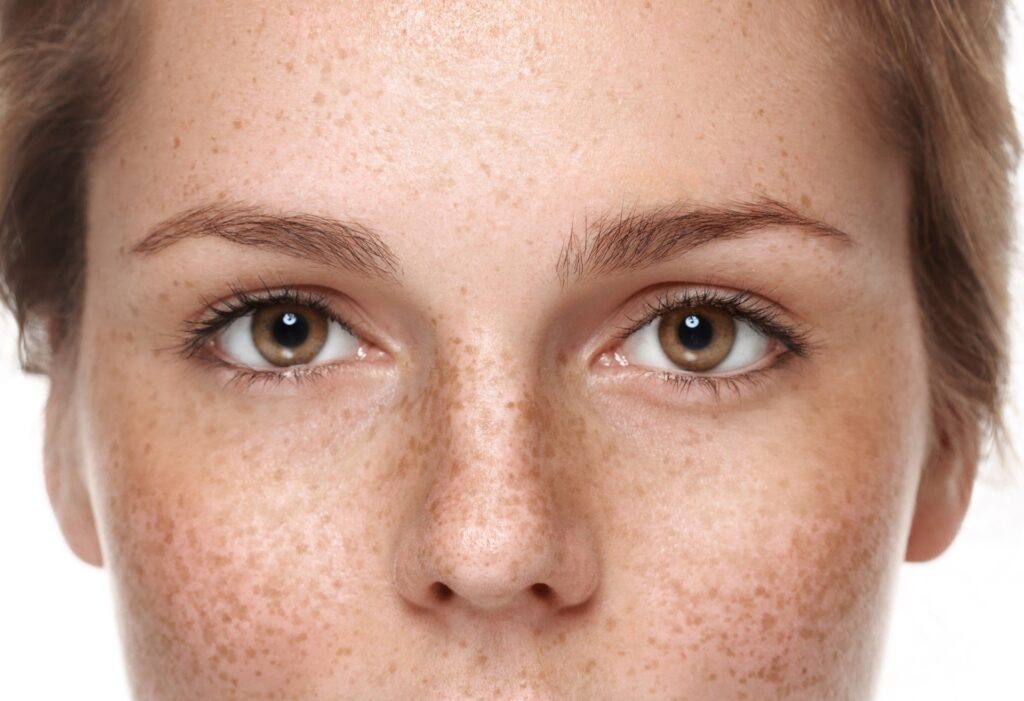Adverts
Skin spots can appear for a variety of reasons, from simple and harmless changes to signs of more serious health problems.

Recognizing when these skin changes deserve attention is essential to taking care of your health and preventing complications. 🩺
Adverts
With increased sun exposure, genetic factors, hormonal changes and even natural aging, the skin is constantly subject to changes.
But how can you tell the difference between a common spot and something that could indicate a more serious dermatological condition, such as skin cancer? And, more importantly, what precautions should you take and when should you seek medical attention?
Adverts
In this article, we explore how to identify different types of stains, the warning signs that should not be ignored and the best forms of treatment available.
In addition, we bring you important tips for keeping your skin healthy, preventing the appearance of new spots and protecting it against future damage. 🌞
Understand which factors deserve special attention and how preventive care can make all the difference to your dermatological health. Keep reading and find out everything you need to know about the subject! 🖐️

Skin Spots: When Is It Time to Put Down Netflix and See a Dermatologist?
Have you ever had that moment when you stood in front of the mirror, looked at a spot on your skin and thought, “Is this just aging or am I turning into a Dalmatian?” Well, my friend, spots on your skin can be as mysterious as an open-ended TV episode. Let’s explore the causes, identify the warning signs and understand when it’s worth swapping popcorn for a doctor’s appointment. 🚨
Harmless spots: a toast to your creative melanin
First, let’s clear something up: not every blemish is a sign of a dermatological apocalypse. Some are just nature creating abstract art on your body. Here are some blemishes that are generally not a cause for concern:
Related articles:
- Freckles: Loved by some, hated by others, these are small spots caused by sun exposure and usually appear on lighter skin.
- Melasma: These dark spots, usually on the face, can be triggered by hormones (hello, pregnancy!) or sun exposure. They are not dangerous, but they can be aesthetically annoying.
- Age spots: Also known as age spots, these are common in people over 40 and appear after years of sun exposure. They are not harmful, but can be removed by those who do not like to live with them.
In short, if the spot doesn’t itch, doesn’t grow quickly, and doesn’t change color like a ninja chameleon, it’s usually fine. But if you’re in doubt, read on before you go out there with a magnifying glass inspecting every inch of your body.
Troubling spots: what to watch out for (or two!)
Now, let's get serious (or almost serious, because this is still my text, right?). There are spots that raise a red flag in the dermatological world. Here are some of them:
Spots that change color or size: the famous dermatological rollercoaster
If a mole starts growing faster than a WhatsApp chat, it’s time to pay attention. Moles that change color (especially to darker or redder tones) or increase in size could be a sign of something more serious, like melanoma.
You can use the ABCDE rule to evaluate your spots:
- A – Asymmetry: Half of the stain is not the same as the other half. We are not talking about a poorly cut pizza, but rather something that deserves attention.
- B – Edge: Irregular or poorly defined edges can be a warning sign.
- C – Color: Color variations within the same stain are not good news.
- D – Diameter: Stains larger than 6mm (about the size of a pencil eraser) deserve extra attention.
- E – Evolution: Any noticeable change over time is cause for investigation.
Spots that itch, bleed, or have a different texture
If your spot is more irritated than you are in line at the bank, it could be a sign of something serious. Persistent itching, bleeding, or an unusual texture (rough, thick, or scaly) are all symptoms that shouldn't be ignored.
Don’t be fooled into thinking it’s “just a little bruise.” Make an appointment with a dermatologist to make sure there’s nothing wrong. After all, prevention is better than cure (or using heavy makeup to hide it).

How to treat stains: from home to the office
Now that we’ve talked about identifying stains, let’s move on to the practical part: what to do with them? The good news is that many stains can be treated or at least minimized with the right options.
Home treatments: that little push
If the stain is harmless, some simple care can help lighten or prevent it:
- Sunscreen: It seems obvious, but it bears repeating: using sunscreen daily is the best way to prevent new spots and protect existing ones.
- Hydration: Hydrated skin is happy skin. Use creams specific to your skin type.
- Natural ingredients: Masks with honey, aloe vera or even milk can help to soften blemishes, but go easy – don't use the whole kitchen on your face, okay? 🍯
Dermatological treatments: when it’s time to call in the professionals
If the spot is very bothersome or causing concern, dermatologists have an arsenal of effective treatments, such as:
- Chemical peels: A skin “reset” that helps remove superficial blemishes.
- Laser: Technology that seems like something out of a science fiction film, but is great for lightening blemishes and evening out skin tone.
- Cryotherapy: Treatment that uses liquid nitrogen to remove specific stains (and gives you that mad scientist look in the office).
- Topical medications: Lightening creams based on hydroquinone or retinoic acid may be indicated.
Before you try anything on your own, consult a dermatologist. They know what they’re doing (unlike that YouTube tutorial).
Prevention: the best way to avoid unwanted surprises
Now that you know how to identify and treat blemishes, let's talk about how to prevent them from appearing or getting worse. After all, as they say, prevention is better than cure (or spending a ton of money on creams and treatments).
The basics that everyone should do
Want to avoid stains? Here are some basic tips that really work:
- Use sunscreen: Yes, it’s there again! Choose one with an SPF that suits your skin type and reapply every 2 hours.
- Avoid the sun during peak hours: Between 10am and 4pm, the sun is at its strongest and can cause significant damage to your skin.
- Balanced diet: A diet rich in antioxidants (fruits, vegetables and whole grains) helps protect your skin from the inside out. 🥗
- Hydration: Drink water and use moisturizers. Hydrated skin is less prone to blemishes.
Regular checkups: the skin check-up
Make regular visits to your dermatologist, especially if you have a family history of skin cancer or other skin conditions. A routine checkup can catch problems before they become serious.
And remember: taking care of your skin is not just about aesthetics, but also about health. So, invest some time in it and avoid unpleasant surprises.

Conclusion
In short, be aware of the skin spots It is essential to take care of your health and prevent dermatological complications. 🧴 Although some spots may be harmless, others may indicate more serious problems, such as skin cancer or chronic conditions, including melasma or psoriasis. Therefore, it is essential to know the warning signs, such as changes in color, size, shape or texture. In addition, if spots appear accompanied by itching, bleeding or other persistent symptoms, it is time to see a dermatologist. 🩺
Prevention is always the best way. 🛡️ Using sunscreen, staying properly hydrated, and adopting a skin care routine can help prevent many of these problems. In addition, regular check-ups with a specialist ensure early identification of possible conditions. If necessary, there are several treatments available, such as topical creams, lasers, or specific medical procedures. The important thing is not to ignore the signs that your skin presents.
Remember: the skin is the largest organ in the human body and plays a vital role in your health. Taking care of it goes far beyond aesthetics – it’s a question of well-being and quality of life! 🌟 Stay alert and maintain a skincare routine for healthy and protected skin. 💖




